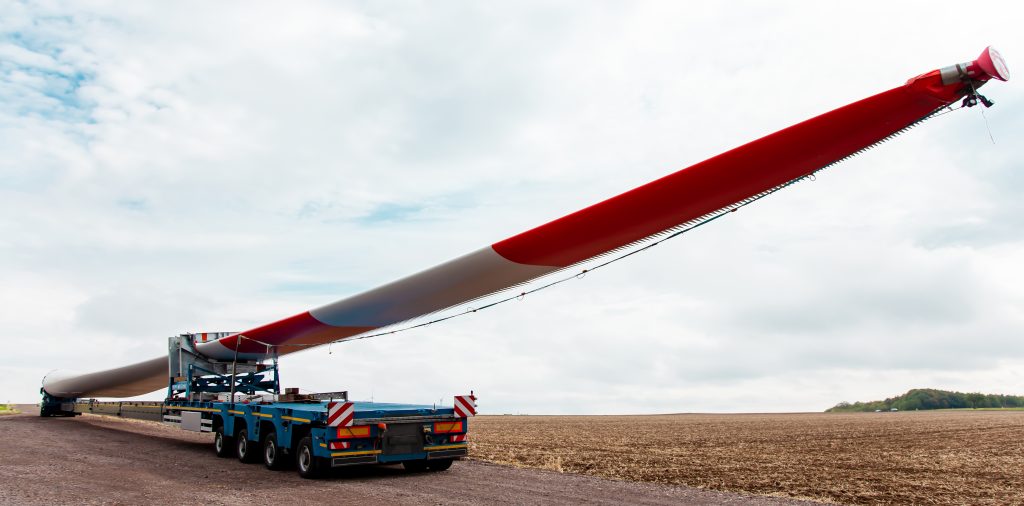Has COVID or workforce aging affected the ability of wind-energy companies to find workers?
I would say not more so than it’s affected other skilled trades. When you think of Tradesmen, where our expertise lies, we focus 100 percent of our time on acquiring talented, highly skilled craftworkers. During COVID we had some recruiting challenges, and it’s still a challenge because of a change in dynamics for work expectations coming out of COVID, but I don’t think wind is particularly different.
On the other hand, we do see some infusion of new prospective talent in the renewable space, more than we feel in most trades. That’s been a real challenge for us, particularly in the core commercial construction trades. Carpenters, plumbers, electricians are leaving the workforce faster than their replacements are joining. We’ve seen less of that in the renewable space. Renewables obviously generate some interest among young people.
When you talk about wind farms, solar fields, and some of the hydro-power projects that are out there, I do think that they may be viewed as cooler career options; they’re more attractive for new people than the idea of running plumbing in a home as an example.
With the world energy shortage, will there be a growth in wind-farm projects that will stretch the available workforce further?
I believe there will be, and my hope remains high that there will be, for a number of reasons. Wind energy is a really important step for our future, for the infrastructure of our country, and how we continue forward. We’ve got to find a way to more effectively leverage these renewable options. So, from that standpoint, I hope that it’s the case.
These are great opportunities for our craftworkers. When I think about wind, I think they’re some of our most technical, highly skilled employees. I’d love the opportunity for more people to gain that experience. And candidly, for us, when it comes down to the type of individual that wind requires, it’s more in our wheelhouse. It gives us the best opportunity to make our customers successful and for us to run a sound business from the standpoint of profitability, retention, and all of the things that are important to us.
So yes, I do think more wind projects will continue to come. There’s a fair number of wind projects out there now that are starting to meet their initial lifespan. Not only do I think we will see more wind in terms of new projects moving forward, but we are now getting into that place where we’re starting to see renovations, repowers, and different projects getting newer technology into the older wind farms. That’s going to be a factor as well; both are important for our customers.
Do wind companies need workers with special skills? And if so, are they hard to find?
Yes and yes. The wind work, as I just mentioned, is highly technical work. I think we found that across the board. The ancillary trades are more traditional trades. When you think about equipment operators and form and foundation work, I think that translates probably more frequently than the wind specific trades. The wind-specific trades are certainly special. Not only are they specific to wind or turbines, but also in terms of size and scale.
The foundation you lay for one wind tower is significantly larger than the type of foundation you lay for almost anything else. When you consider crane operators, what they’re moving around, and the circumstances under which they’re moving them, it always amazes me.
So, yes, the skills for wind industry craftworkers are unique. They’re highly technical trades in our view. And they’re a challenge to come by because this is still really a new and growing area of the overall landscape. As time goes on, that should get a little bit easier because we should have some more talent. But of course, that will be met with other factors like greater competition and other things that always drive it. We feel good about our ability to find these people for our customers, but that’s not to say it’s easy.
Why do wind companies have surges in their workforce needs? How do you manage that historically?
The easy answer is supply and demand. This has been the case with the skilled trades as long as they’ve been around. There are ebbs and flows in the business. That’s why companies like Tradesmen exist. We provide an essential service by helping our customers more effectively manage the peaks and valleys in their work that are inherent to this industry. So that’s the easy answer.
On top of that, I think there are other pieces. Government subsidies and other programs help to support the growth of renewable energy. The way tax credits work within this space can influence how or when projects are being started and/or completed. That’s a significant factor. Wind projects may have significant rushes up to a certain period of time that has been defined, and companies may see a very quick downturn once that’s happened until something new comes out there.
On top of all of it, there are a number of different trades that go into successfully building a wind farm. Customers that specialize in renewable energy should also be specializing in form and foundation work and specializing in some of the electrical or electronic wiring type pieces of the work. Because of that, it’s natural that there are going to be gaps in their workforce, and we can help them fill those gaps.
I don’t want it to come across as being as simple as supply and demand, but it really is that. It’s just that there are more elements of supply and demand in the renewable space as of now. As time goes on and there’s more competition and it becomes more of the norm — for lack of a better way to put it — you’ll probably see some of those influences calm down.
Are more companies using services like those offered by Tradesmen?
Yeah, this is more the norm for sure. When I started with Tradesmen in 2006, it seemed like almost every time I walked into a prospective customer’s office they were hearing about staffing and the skilled trade space for the first time. And that was a really great way to sell. Today, those situations are much fewer and further between. Companies understand the importance of outside staffing. In many cases, it started on the corporate side of these businesses, and they started to realize that they had a new resource for finding skilled workers. And then on top of that, our competition has grown. The number of competitors we have both regionally and nationally today is dramatically different.

So ultimately, yes, I think it’s more acceptable for people to use third-party resources. And candidly, we’re getting close, if not already at the point, where companies are at a competitive disadvantage if they don’t have this sort of resource to leverage. I think it’s here to stay. It’ll be interesting to see, over the course of the next 20 or 30 years, the changes in the investments in infrastructure, not just in renewables, but really across the country—roads, bridges, all of those things. It’ll be interesting to see where we fit into that trend long term, but I think it will be a prominent place.
How do surge workers help wind-energy companies compete?
The first thing wind companies have to do is meet the demand. When these companies have projects with a project timeline and a deadline, they’ve got to meet them. That’s first and foremost.
The more scientific response to the question is something that we really preach on the front side. We work to help contractors understand how much it costs them to either hold on to employees between projects when they don’t have productive work for them versus the cost of hiring and de-hiring employees. There’s a significant cost to both of those, and we really work hard to communicate that on the front end.
Tradesmen delivers a value-added service. We try to help companies truly understand how they can drive more dollars to their bottom line. That helps us to help them be competitive. If we can save them “X” number of dollars on every hour of labor that they work, even if the hourly cost of labor when using Tradesmen is greater than it would cost themselves, we can dramatically improve the economics of their business.
The other piece of it is, and we see this a lot in wind and in some other vertical spaces like maritime and shipbuilding projects where you have specialty craftworkers, is supporting worker relocation. We have a national footprint where skilled workers could be needed. There’s a lot of work that goes into coordinating that effort. If I’ve got crane operators who are primarily located in Texas ¬but the next five projects on the books for my wind client are in Massachusetts, Michigan, Washington, California, and Nebraska, then how do we get those people where they belong? And, how do we do it in a way that doesn’t take away from our clients’ real focus, which is building wind towers?
Tradesmen is able to bring that coordination element and take some of that off of our client’s hands. We tell them all the time, “We don’t deal with materials; we don’t deal with weather delays; we don’t deal with permitting. We deal with getting you labor when and where you need it.” That includes facilitating some of those logistics. If we can take that burden away from our customer and they can focus on what they’re there to focus on that helps them be more competitive.
Can you tell me of any situations that kind of help illustrate what you’re talking about?
There are a couple of elements. The labor that is specific to this industry, it may not be located in the place where the work must be performed. There is a designation or an understanding that we’re going to go and build this wind farm in the place that’s going to generate the most energy, and we’re going to bring everybody to it. We’re not going to North Texas just because we think that’s where it’s easiest to find skilled workers.
We’re doing it en masse. We’re not sending two guys to Maine and two guys to Michigan. These needs come up, and these projects get set, and this customer needs a hundred people at the project peak. They need 30 people this week and 50 the next week and then 100, and then it’s going to trail off on the back end. Those are examples of efforts that we’re making every single day that aren’t necessarily generating new business for us; it’s just facilitating the business that we’ve already earned. That is probably the story that stands out the most.
Another piece is that we work in concert with our clients to understand the specific training or certifications that may be required. For example, we have a project in Maine, and Maine lacks the number of licensed individuals that we need, but it reciprocates with these three other states. It’s our responsibility to understand that and maximize the pool of candidates that we can provide.
Sending a crane operator or a tower climber or an electrician to a project in Maine is not as simple as, “Hey, you want to go to Maine?”. No, there is a great amount of effort that goes into getting just one person there, and the fact of the matter is we typically are doing that en masse.
How has Tradesmen been able to recruit and retain that ready workforce?
There are really two elements: No. 1, you’re always pipelining. We’re always pipelining for these opportunities. We’re always out there in front of workers, whether they are employees who have worked for Tradesmen in the past, employees who may have worked for our customer in the past, or new potential candidates. Regardless of what we have on the books today, and who we need to send to projects tomorrow, we’re working to pipeline.
No. 2, and I think this is the competitive advantage that Tradesmen has, is we have this ability to leverage a large footprint with a vertically focused team. We serve nearly 200 markets with specialists in renewables. We have about 250 recruiters and coordinators who are, every single day, focused on driving talent into our database, which is a million and a half craft workers at this point. And once they’re there, keeping them there. In some cases, that means dispatching them to a job. In other cases, it means keeping them warm while they finish a project with a competitor or with a customer. Partners benefit from Tradesmen’s recruiting expertise and magnitude, having at their disposal prescreened craft professionals in all trades at all skill levels. Unlike other staffing companies, Tradesmen has divisions dedicated to specific industries, including construction/heavy construction, industrial and manufacturing, marine/shipbuilding, facility/institutional, and renewable energy.
If we effectively leverage our footprint and we effectively maintain contact and stay in front of the prospective craftworkers who meet our skillset standards, then we’re going to be successful. If we let our foot off the gas for even a short period of time, you’d be amazed at how quickly somebody else can enter the fray.
We always want to protect our A and B players. That’s paramount to our success. We are always working to protect and maintain the relationships with our best craft professional employees.
Is there anything else you’d like to mention that we didn’t talk about?
There’s a lot of excitement around this renewable space in general. This is really important, in my opinion, for the country moving forward. I would say regardless of anybody’s views, this is real. It has been happening for the past 10 or 15 years on somewhat of a large scale and I think that’s going to grow dramatically over the next 10 or 15 years. It’s becoming much more on the forefront, and I think it’s important.
The other piece of it is these are great career opportunities. As often as we can, we say that working in the trades, especially in trades that are as highly specialized and as rapidly growing as wind energy, there’s a lifetime worth of opportunity for young people out there.
More info www.tradesmeninternational.com






























